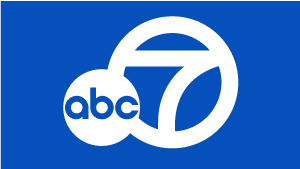Some say mandatory water restrictions may have done more harm than good

SAN FRANCISCO (KGO) -- Despite the recent rain, our drought continues and so does the call to save water. However, some say the way the state imposed emergency conservation measures may have done more harm than good.
Across the Bay Area lawns and landscaping are drying out. "It's difficult because I like my garden and I like my grass to be green, but I think that this important," Dublin resident Voni Ribera said.
PHOTOS: DroneView7 flies over Camanche Reservoir
It's one of the many signs that people are cutting back on their water use, but if you head south to Beverly Hills it doesn't look like everybody got the message. "The idea of your nice little green grass getting lots of water every day, that's going to be a thing of the past," Gov. Jerry Brown said.
In April, the governor ordered mandatory cuts in water usage and the Bay Area listened. Many local water agencies report people here are meeting or exceeding the Brown's call to save water.
He ordered a 32 percent cut. Beverly Hills did impose restrictions, but it has only cut water use by 20 percent.
VIDEO: DroneView7 flies over Camanche Reservoir
The Central Valley town of Clovis missed it's goal by three percent. Officials there seem more worried about saving trees than saving water. "It's very unsightly, it's going to cost money to someday either replace that with other plantings, we've had a great loss of trees," Public Works Director Lisa Koehn said.
UCLA plant scientist Don Hodel doesn't think public and private landscaping should have suffered. "My concern with the way the state imposed watering restrictions is that they were made without any knowledge of how plants grow, how plants interact with the soil, how water moves into the soil and how the soil holds water," he said.
Instead of restricting water use, Hodel believes more practical watering advice could have saved plants and trees. "We can retain our landscapes if we simply watered any more precise or a judicious manner," Hodel said.
Hodel doesn't believe any plant experts were consulted and the deputy director of the California Department of Water Resources agrees the plan was a rush job. "It was one size fits all, that wasn't the best and there wasn't a lot of time to get on top of this," Hodel said.
Hodel questions whether the order was even necessary. He said landscaping uses just a small fraction of the states water supply. "So if we never watered another tree, shrub, ground cover, blade of grass, potted plant in California again the state would save 7 percent of its total water use," he said.
To put that in perspective, the California Department of Water Resources says 77 percent of the state's water is used for agricultural purposes.
East Bay Municipal Utility District still believes every drop counts. "This is bad, this is the worst drought we've seen in a generation," EBMUD spokesperson Abby Figueroa said.
We saw just how bad it is when DroneView7 flew over the Camanche Reservoir near Stockton. The reservoir supplies water to more than one million people in the East Bay and it's only a little more than a quarter full right now. It's just one of many around the state that's parched. "We're not going to run out of water, but we certainly are going to continue seeing restrictions. We might get tougher restrictions because we have to make sure we have enough drinking water for the following year and the one after that," Figueroa said.
Those restrictions could be more than just turning off your sprinklers.
Beverly Hills and three other cities were among the first fined $61,000 each for not complying with state water restrictions.
Interactive Google Map: The blue markers show agencies that are in compliance with state water restrictions. The red markers show's agencies that are NOT in compliance. This is the most recent data from the CA State Water Board as of September 2015.
Written and produced by Ken Miguel


















